Family history - in which documents to search for information?
 If you restore the history of your family and are faced with a situation where the necessary metric books are not preserved - what should I do?
If you restore the history of your family and are faced with a situation where the necessary metric books are not preserved - what should I do?Or do you have only data on the birth and death of your ancestors, and would you like to know in detail - who they were, what did they do - where to turn in this case?
In the archives are stored many documents from which you can get invaluable information about people who have long since gone and seemed to have left no traces in history.
For example, biographical documents include formular
(service) lists, which collected information about a person's biography -
official, civil servant, teacher, doctor, officer. In the service
lists recorded the date of birth, social origin,
information about education, travels, rewards, incentives, recovery,
marital status. The track record could be preserved as a separate
document, and make up part of the personal file.
In the Soviet period, the lists of lists, without replacing
content, began to be called "documents on personnel" - personal cards
accounting of personnel (where all biographical data were entered), autobiographies,
alphabetical lists of employees with full personal data, etc.
When composing the genealogy of representatives of the clergy, you can
use clergy sheets, as well as materials of spiritual
consistory. In the section of the clerical list "On the parable of the church" contains
service records of a priest, a clerk, a sexton and other ministers of the church, information
about their age, education, marital status, behavior in the service and at home.
With the help of the clinic statements it is possible to trace the origin, official activity,
family ties of spiritual persons and members of their families with representatives of other estates.
The documents of the spiritual consistories contain information about the appointment
to the service of priests, as well as the consideration of court cases
on clergymen.
About a person's stay in the military service can be learned from materials
recruiting presence. The recruitment records recorded the age of the recruit,
members of his family, knows how to write, read what special craft he owns and special
signs (height, color of eyes, hair). But it should be noted that not all recruitment
the lists were filled in the same pattern; sometimes they only recorded age
and the growth of a recruit.
If there is evidence that the person sought was awarded with the insignia (for example, the St. George cross), then it is possible to include in the list of studies and lists of the recipients.
Information for the pedigree can also be found in the documents of the courts, administrative,
economic institutions, organs of urban and rural self-government.
Noble pedigrees are compiled with the help of Provincial
genealogical books, most of which were published, and
nobility, which are stored in the funds of the Noble Assembly of the regional
archives and in the fund of the Department of the Gerold of the government Senate in the Russian
state historical archive in St. Petersburg.
All information related to evidence of belonging to the nobility
with the addition of a new person to noble books, etc., passed
through the heraldic commission, the archive of which was part of the archive of the Ministry of Internal Affairs, which
in turn, and formed the foundation of the funds of the St. Petersburg State Agrarian University in St. Petersburg. Provincial Noble Assembly
necessarily send there all the information relevant to the confirmation
the nobility.
If you know that the ancestor was a military man and had an officer's rank, then
you can contact the Russian State Military History
archive in Moscow, and if it was a naval officer - track records
Seamen are kept in the Russian State Archive of the Navy.
Information on the personnel of the Red and Soviet Army is available in the documents of the Central
archive of the Ministry of Defense of Russia in Podolsk, Moscow Region (Podolsk, Moscow Region, 142117, 78 Kirov Street).
We need only take into account that for the rank and file there are no personal catalogs, the documents are systematized
by numbers of military units, so without the number of the military unit in which I served
Your ancestor, to find something in Podolsk is not possible.
Genealogical information also contains lists of those killed in
The Second World War, known as the Book of Memory.
The information in them is systematized by districts, in alphabetical order of names.
In addition to the surname, name and patronymic, date and place of birth, they indicate: when
was drafted into the army, military rank, date and place of death. Memory books are stored
in the relevant state archives.
Biographical data are also available in investigative
and court cases of the Cheka-OGPU-NKVD, that is, cases of repressed
and dekulakized.
Filtering cases on repatriates (1941-1944years) contain
biographical information about a person, and in many cases - about his family.
Supplement genealogical research can also study the literature:
encyclopedias, address books, autobiographies, memoirs.
For example, biographical documents include formular
(service) lists, which collected information about a person's biography -
official, civil servant, teacher, doctor, officer. In the service
lists recorded the date of birth, social origin,
information about education, travels, rewards, incentives, recovery,
marital status. The track record could be preserved as a separate
document, and make up part of the personal file.
In the Soviet period, the lists of lists, without replacing
content, began to be called "documents on personnel" - personal cards
accounting of personnel (where all biographical data were entered), autobiographies,
alphabetical lists of employees with full personal data, etc.
When composing the genealogy of representatives of the clergy, you can
use clergy sheets, as well as materials of spiritual
consistory. In the section of the clerical list "On the parable of the church" contains
service records of a priest, a clerk, a sexton and other ministers of the church, information
about their age, education, marital status, behavior in the service and at home.
With the help of the clinic statements it is possible to trace the origin, official activity,
family ties of spiritual persons and members of their families with representatives of other estates.
The documents of the spiritual consistories contain information about the appointment
to the service of priests, as well as the consideration of court cases
on clergymen.
About a person's stay in the military service can be learned from materials
recruiting presence. The recruitment records recorded the age of the recruit,
members of his family, knows how to write, read what special craft he owns and special
signs (height, color of eyes, hair). But it should be noted that not all recruitment
the lists were filled in the same pattern; sometimes they only recorded age
and the growth of a recruit.
If there is evidence that the person sought was awarded with the insignia (for example, the St. George cross), then it is possible to include in the list of studies and lists of the recipients.
Information for the pedigree can also be found in the documents of the courts, administrative,
economic institutions, organs of urban and rural self-government.
Noble pedigrees are compiled with the help of Provincial
genealogical books, most of which were published, and
nobility, which are stored in the funds of the Noble Assembly of the regional
archives and in the fund of the Department of the Gerold of the government Senate in the Russian
state historical archive in St. Petersburg.
All information related to evidence of belonging to the nobility
with the addition of a new person to noble books, etc., passed
through the heraldic commission, the archive of which was part of the archive of the Ministry of Internal Affairs, which
in turn, and formed the foundation of the funds of the St. Petersburg State Agrarian University in St. Petersburg. Provincial Noble Assembly
necessarily send there all the information relevant to the confirmation
the nobility.
If you know that the ancestor was a military man and had an officer's rank, then
you can contact the Russian State Military History
archive in Moscow, and if it was a naval officer - track records
Seamen are kept in the Russian State Archive of the Navy.
Information on the personnel of the Red and Soviet Army is available in the documents of the Central
archive of the Ministry of Defense of Russia in Podolsk, Moscow Region (Podolsk, Moscow Region, 142117, 78 Kirov Street).
We need only take into account that for the rank and file there are no personal catalogs, the documents are systematized
by numbers of military units, so without the number of the military unit in which I served
Your ancestor, to find something in Podolsk is not possible.
Genealogical information also contains lists of those killed in
The Second World War, known as the Book of Memory.
The information in them is systematized by districts, in alphabetical order of names.
In addition to the surname, name and patronymic, date and place of birth, they indicate: when
was drafted into the army, military rank, date and place of death. Memory books are stored
in the relevant state archives.
Biographical data are also available in investigative
and court cases of the Cheka-OGPU-NKVD, that is, cases of repressed
and dekulakized.
Filtering cases on repatriates (1941-1944years) contain
biographical information about a person, and in many cases - about his family.
Supplement genealogical research can also study the literature:
encyclopedias, address books, autobiographies, memoirs.
Read more:

Confirmation of nationality - Jews

Family history - in which documents to search for information?
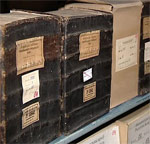
How to confirm nationality German

What is a genealogical study?
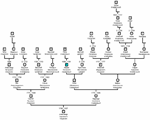
How to study your pedigree
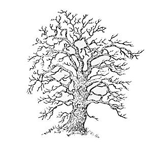
Family history - biographical documents
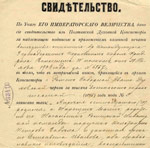
Metric Books
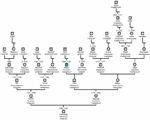
How to study your pedigree

Family history - biographical documents
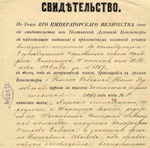
Metric Books

Confirmation of nationality - Jews
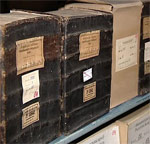
How to confirm nationality German

What is a genealogical study?

Autobiography at the time of hiring